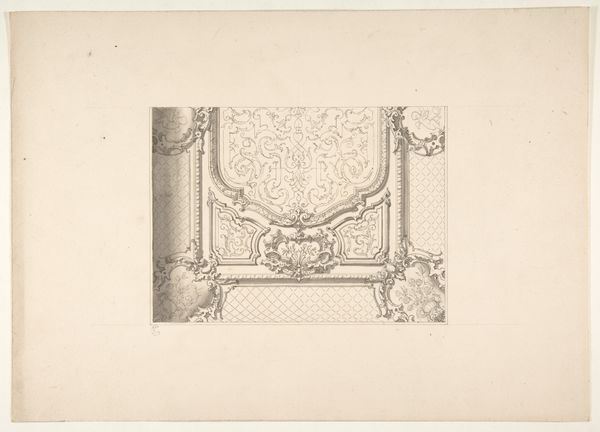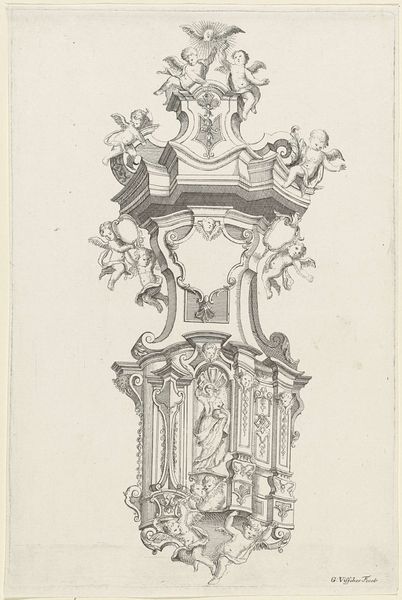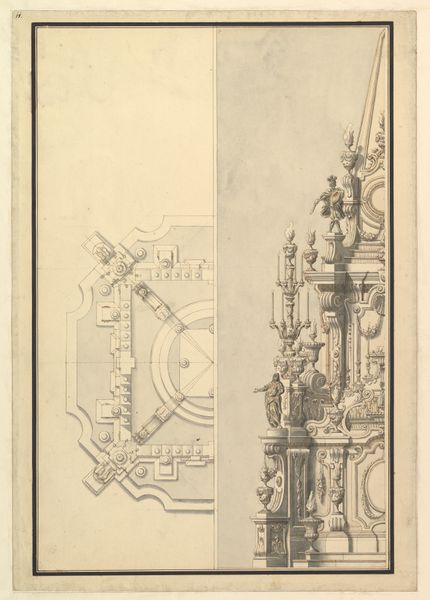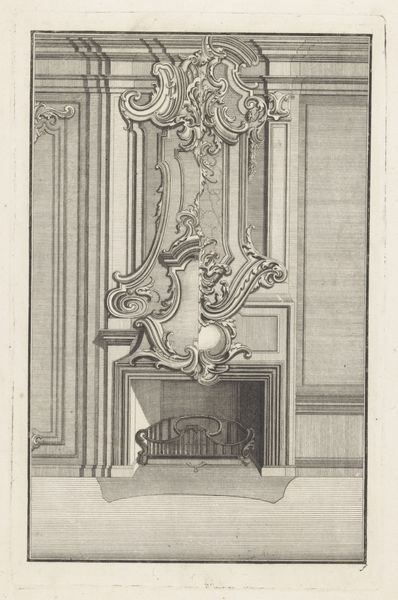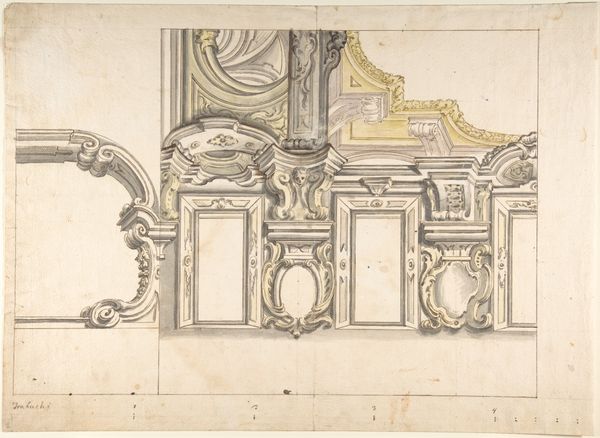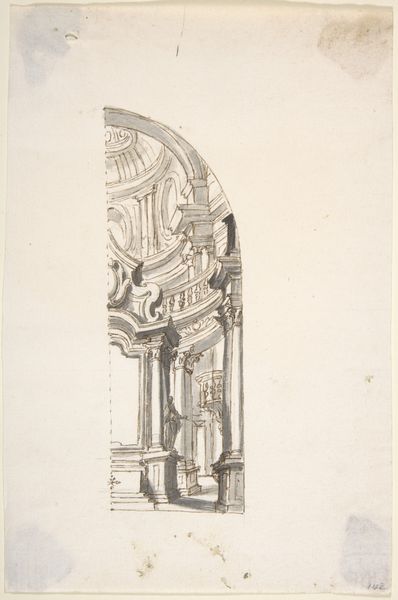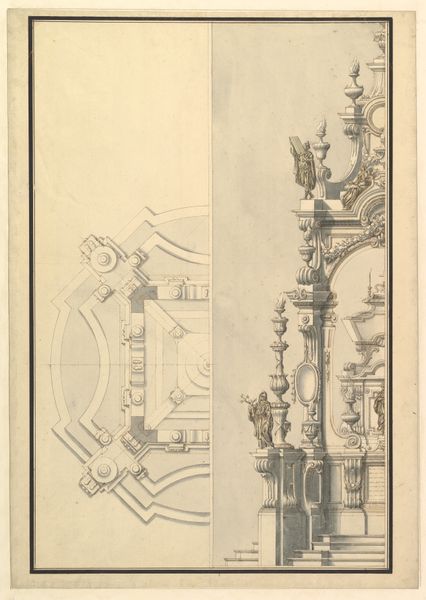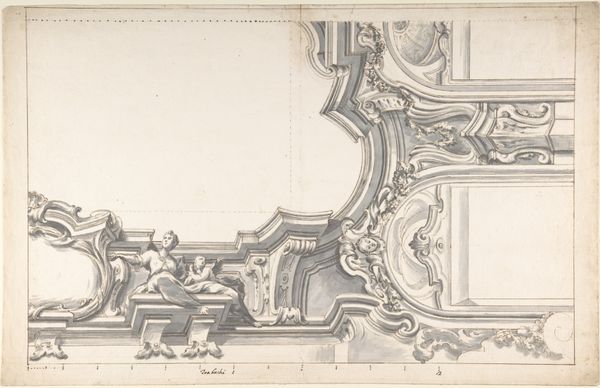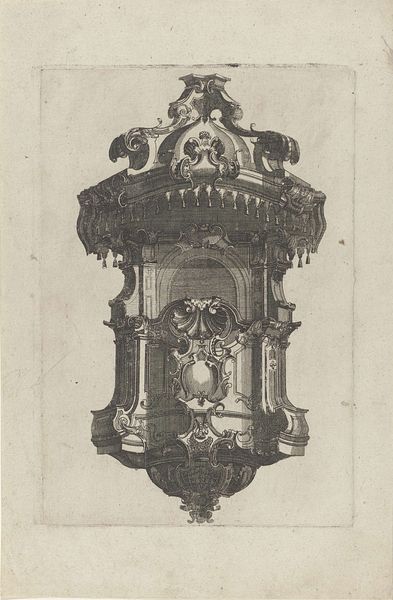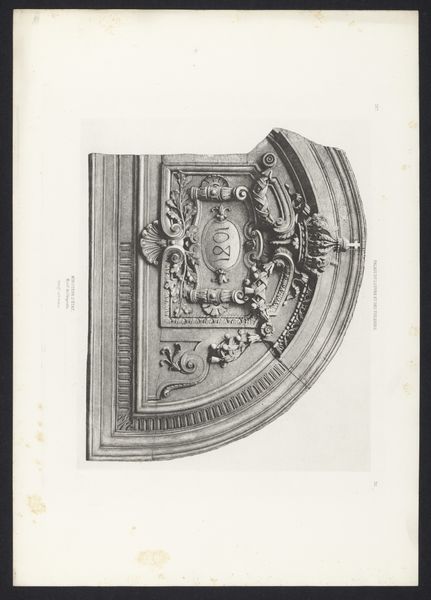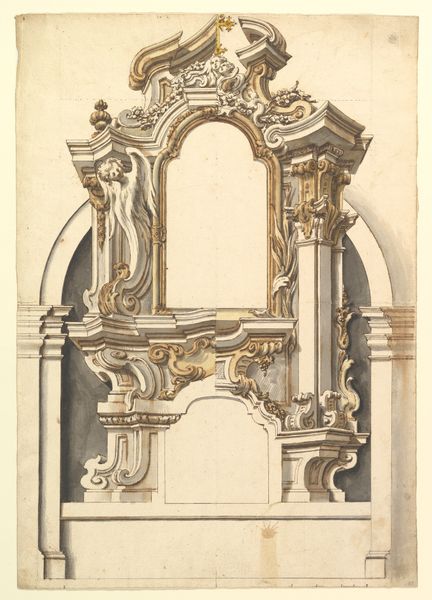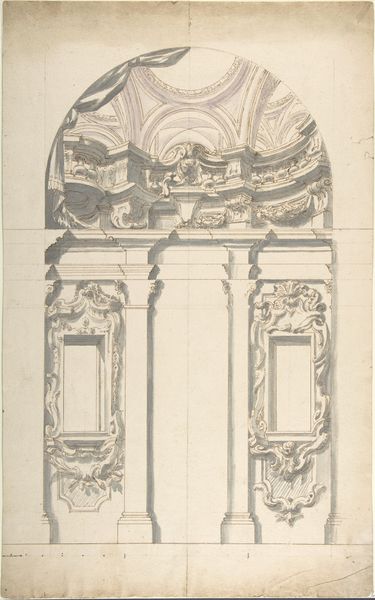
Perspectival View of the Top Half of an Altar or Portal 1725 - 1765
0:00
0:00
drawing, pencil, architecture
#
drawing
#
baroque
#
geometric
#
pencil
#
history-painting
#
academic-art
#
architecture
Dimensions: Sheet: 9 3/16 × 14 15/16 in. (23.4 × 38 cm)
Copyright: Public Domain
Curator: This pencil drawing, "Perspectival View of the Top Half of an Altar or Portal," was created sometime between 1725 and 1765 by an anonymous artist, and it now resides here at the Metropolitan Museum. It depicts, well, exactly what the title says. Editor: It immediately evokes a sense of the theatrical, almost like a stage design for some grand opera or a set for a solemn ritual. The geometric structure combined with the elaborate baroque detailing certainly suggests a very specific and dramatic purpose. Curator: Indeed. Architectural drawings like this served multiple purposes. Of course, there was the practical use for workshops. But the formal perfection and visual impact were very significant for how art academies trained new artists during the Baroque era, shaping their artistic tastes. This drawing presents itself almost as a demonstration of artistic skill as much as a possible architectural proposition. Editor: Absolutely. There’s an almost obsessive attention to detail. Those Corinthian columns, and then the recurring shell motifs and those grimacing mascarons above! There’s an emotional charge embedded in those forms. Do you think they were specifically intended to evoke feelings of awe or perhaps even subliminal dread, associating religious spaces with feelings of both sacred wonder and mortal fear? Curator: It's interesting that you perceive dread; I initially read a self-assured demonstration of faith and institution. That reading does point to how these weren't neutral representations, these images actively participate in power dynamics, in both religious and political spheres, especially when influencing architectural commissions, setting the stylistic direction of a society's symbolic language. Editor: And perhaps that’s the brilliance of effective iconography, its layered impact can allow various reactions depending on background and belief systems. So it acts like a powerful tool in cultural memory by referencing older motifs and updating them with new political or spiritual meaning for the audiences of its own time. Curator: Exactly. Its architectural symbolism also makes you wonder who was commissioning and using artworks like this in that period. And perhaps why the artist decided not to sign it. Was it because it's intended only for educational purpose in a school setting? It truly offers a fascinating peek into art education and power structures. Editor: A thought-provoking piece overall, leaving us to ponder the function of beauty as an exercise of, and in, power.
Comments
No comments
Be the first to comment and join the conversation on the ultimate creative platform.
